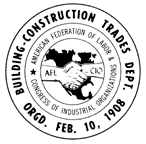|
Gas From Nearby Nitroglycerin Blast Kills Worker
in Manhole 3/4 Hour Later (Taken from Impact Volume XVI, No. 1 May 1998) |

|
A sewer
worker was killed 45 minutes after nitroglycerin-based explosives were
set off underground about 50 feet away, NIOSH has reported. Investigators
from NIOSH, the National Institute for Occupational Safety and Health,
said carbon monoxide gas from the blast 18 feet below ground caused a
worker in a manhole to collapse. When two workers went in to rescue the
victim, one got him out, but the other would-be rescuer collapsed in the
manhole and died.
NIOSH said this death in August 1997 was the first known work-related
death from this type of exposure to the gas. Carbon monoxide has no odor
and can't be seen. The gas has been known to poison workers using gas-powered
tools without enough fresh air (see Impact, May 1995). (Nitroglycerin
was the main explosive, but not the only one.)
On the morning of August 4, a construction crew in southwest Atlanta set
up a precast concrete manhole. At 3:45 p.m., workers for another contractor
set off a blast to break up bedrock 6 feet below ground to lay pipe. At
4:30, a construction worker went 12 feet down to grout the manhole seams.
He collapsed and two coworkers went in to rescue him.
Two days later, the city of Atlanta called in NIOSH to investigate. NIOSH
measured carbon monoxide at 2,000 parts per million (PPM) in the manhole,
coming through the soil. NIOSH says 1,200 PPM is "immediately dangerous
to life and health." The MSDS (material safety data sheet) for the
blasting materials didn't say carbon monoxide could be produced, said
John Decker, of NIOSH.
The death shows that confined-space procedures must be used. During blasting,
procedures are needed to protect people in nearby basements. And rescuers
must be careful.
For more information, call NIOSH at 1-800-CDC-INFO (1-800-232-4636).
![]()
This paper appears in the eLCOSH website with the permission of the author
and/or copyright holder and may not be reproduced without their consent.
eLCOSH is an information clearinghouse. eLCOSH and its sponsors are not
responsible for the accuracy of information provided on this web site,
nor for its use or misuse.
![]() eLCOSH
| CDC | NIOSH
| Site Map | Search
| Links | Help
| Contact Us | Privacy Policy
eLCOSH
| CDC | NIOSH
| Site Map | Search
| Links | Help
| Contact Us | Privacy Policy
